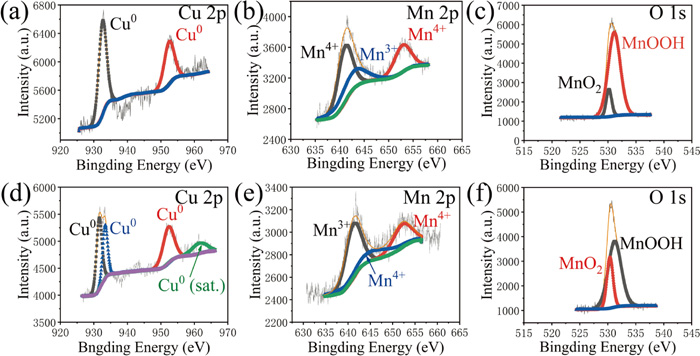Volume 62, Issue 3
Displaying 1-29 of 29 articles from this issue
- |<
- <
- 1
- >
- >|
Publication Data
-
2022 Volume 62 Issue 3 Pages Cover-
Published: March 15, 2022
Released on J-STAGE: March 17, 2022
Download PDF (406K) -
2022 Volume 62 Issue 3 Pages Editorial-
Published: March 15, 2022
Released on J-STAGE: March 17, 2022
Download PDF (552K) -
2022 Volume 62 Issue 3 Pages Contents-
Published: March 15, 2022
Released on J-STAGE: March 17, 2022
Download PDF (209K)
Regular Articles
Fundamentals of High Temperature Processes
-
Article type: Regular Article
2022 Volume 62 Issue 3 Pages 405-412
Published: March 15, 2022
Released on J-STAGE: March 17, 2022
Advance online publication: January 09, 2022Download PDF (803K) Full view HTML -
Article type: Regular Article
2022 Volume 62 Issue 3 Pages 413-417
Published: March 15, 2022
Released on J-STAGE: March 17, 2022
Download PDF (710K) Full view HTML -
Article type: Regular Article
2022 Volume 62 Issue 3 Pages 418-425
Published: March 15, 2022
Released on J-STAGE: March 17, 2022
Download PDF (1452K) Full view HTML -
Article type: Regular Article
2022 Volume 62 Issue 3 Pages 426-436
Published: March 15, 2022
Released on J-STAGE: March 17, 2022
Download PDF (1480K) Full view HTML
Ironmaking
-
Article type: Regular Article
2022 Volume 62 Issue 3 Pages 437-448
Published: March 15, 2022
Released on J-STAGE: March 17, 2022
Advance online publication: December 25, 2021Download PDF (1540K) Full view HTML -
Article type: Regular Article
2022 Volume 62 Issue 3 Pages 449-456
Published: March 15, 2022
Released on J-STAGE: March 17, 2022
Advance online publication: January 07, 2022Download PDF (1358K) Full view HTML -
Article type: Regular Article
2022 Volume 62 Issue 3 Pages 457-464
Published: March 15, 2022
Released on J-STAGE: March 17, 2022
Download PDF (1503K) Full view HTML -
Article type: Regular Article
2022 Volume 62 Issue 3 Pages 465-476
Published: March 15, 2022
Released on J-STAGE: March 17, 2022
Advance online publication: January 07, 2022Download PDF (3077K) Full view HTML -
Article type: Regular Article
2022 Volume 62 Issue 3 Pages 477-486
Published: March 15, 2022
Released on J-STAGE: March 17, 2022
Advance online publication: February 05, 2022Download PDF (1528K) Full view HTML -
Article type: Regular Article
2022 Volume 62 Issue 3 Pages 487-495
Published: March 15, 2022
Released on J-STAGE: March 17, 2022
Advance online publication: January 13, 2022Download PDF (1567K) Full view HTML -
Article type: Regular Article
2022 Volume 62 Issue 3 Pages 496-503
Published: March 15, 2022
Released on J-STAGE: March 17, 2022
Download PDF (1793K) Full view HTML -
Article type: Regular Article
2022 Volume 62 Issue 3 Pages 504-514
Published: March 15, 2022
Released on J-STAGE: March 17, 2022
Download PDF (1329K) Full view HTML
Steelmaking
-
Article type: Regular Article
2022 Volume 62 Issue 3 Pages 515-523
Published: March 15, 2022
Released on J-STAGE: March 17, 2022
Download PDF (1440K) Full view HTML
Casting and Solidification
-
Article type: Regular Article
2022 Volume 62 Issue 3 Pages 524-531
Published: March 15, 2022
Released on J-STAGE: March 17, 2022
Download PDF (4929K) Full view HTML
Instrumentation, Control and System Engineering
-
Article type: Regular Article
2022 Volume 62 Issue 3 Pages 532-541
Published: March 15, 2022
Released on J-STAGE: March 17, 2022
Advance online publication: January 08, 2022Download PDF (1485K) Full view HTML
Forming Processing and Thermomechanical Treatment
-
Article type: Regular Article
2022 Volume 62 Issue 3 Pages 542-549
Published: March 15, 2022
Released on J-STAGE: March 17, 2022
Advance online publication: December 16, 2021Download PDF (1013K) Full view HTML
Surface Treatment and Corrosion
-
Article type: Regular Article
2022 Volume 62 Issue 3 Pages 550-560
Published: March 15, 2022
Released on J-STAGE: March 17, 2022
Download PDF (2836K) Full view HTML -
Article type: Regular Article
2022 Volume 62 Issue 3 Pages 561-567
Published: March 15, 2022
Released on J-STAGE: March 17, 2022
Advance online publication: December 16, 2021Download PDF (1209K) Full view HTML -
Article type: Regular Article
2022 Volume 62 Issue 3 Pages 568-576
Published: March 15, 2022
Released on J-STAGE: March 17, 2022
Download PDF (1999K) Full view HTML
Transformations and Microstructures
-
Article type: Regular Article
2022 Volume 62 Issue 3 Pages 577-585
Published: March 15, 2022
Released on J-STAGE: March 17, 2022
Download PDF (1967K) Full view HTML -
Article type: Regular Article
2022 Volume 62 Issue 3 Pages 586-592
Published: March 15, 2022
Released on J-STAGE: March 17, 2022
Download PDF (1422K) Full view HTML
Mechanical Properties
-
Article type: Regular Article
2022 Volume 62 Issue 3 Pages 593-601
Published: March 15, 2022
Released on J-STAGE: March 17, 2022
Advance online publication: December 29, 2021Download PDF (1395K) Full view HTML
Notes
Fundamentals of High Temperature Processes
-
Article type: Note
2022 Volume 62 Issue 3 Pages 602-605
Published: March 15, 2022
Released on J-STAGE: March 17, 2022
Advance online publication: January 13, 2022Download PDF (945K) Full view HTML
Ironmaking
-
Article type: Note
2022 Volume 62 Issue 3 Pages 606-608
Published: March 15, 2022
Released on J-STAGE: March 17, 2022
Download PDF (460K) Full view HTML
Steelmaking
-
Article type: Note
2022 Volume 62 Issue 3 Pages 609-612
Published: March 15, 2022
Released on J-STAGE: March 17, 2022
Download PDF (668K) Full view HTML
Transformations and Microstructures
-
Article type: Note
2022 Volume 62 Issue 3 Pages 613-616
Published: March 15, 2022
Released on J-STAGE: March 17, 2022
Download PDF (621K) Full view HTML
- |<
- <
- 1
- >
- >|
























